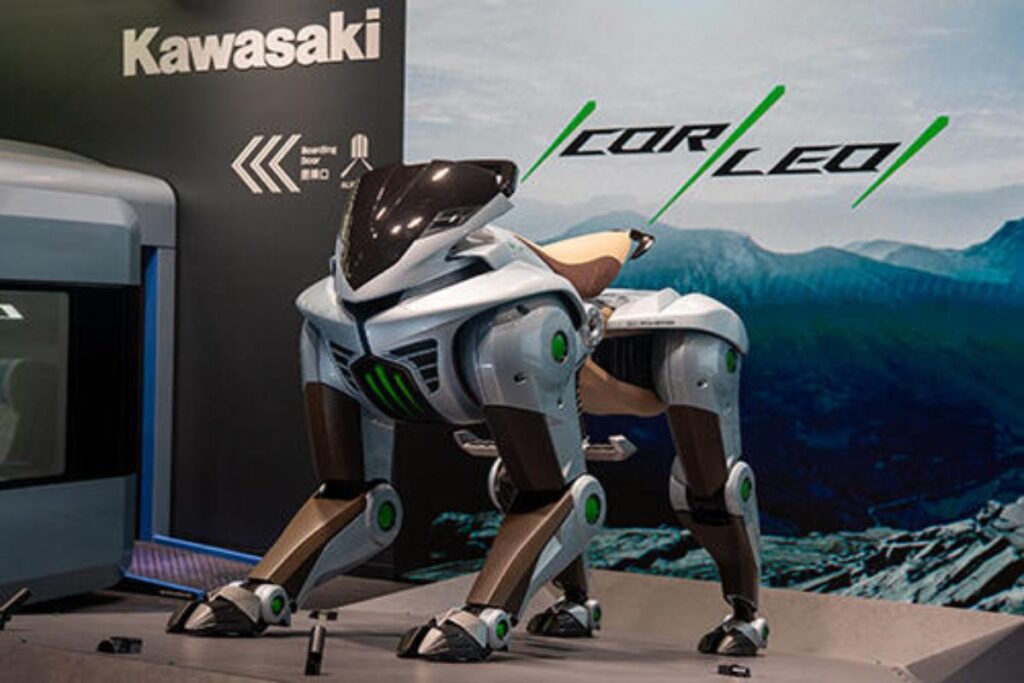Recently, a technological company in Japan unveiled a machine like no other. The Kawasaki Corleo is a highly computerized iron horse with super-amazing mobility. Also called Robot Horse, the Corleo is the latest result of man’s desire to replicate the speed and strength of real horses.
For many centuries, no animal collaborated with humankind more than horses. These graceful creatures served their human friends with their strength and speed. They bravely accompanied our ancestors to war and transported them over long distances.
However, as time passed and technology advanced, horses were dethroned from their position as the first choice for manual labor and transportation. By the 19th century, steam power and internal combustion had stolen the show. The difference in efficiency was clear. The fatigue-prone animals were never going to be any match for machines.
Cars, trains, and planes soon became the far superior means of transportation. Slowly, horses became scarce on the road. Most of them became objects for sport and domestic companions.
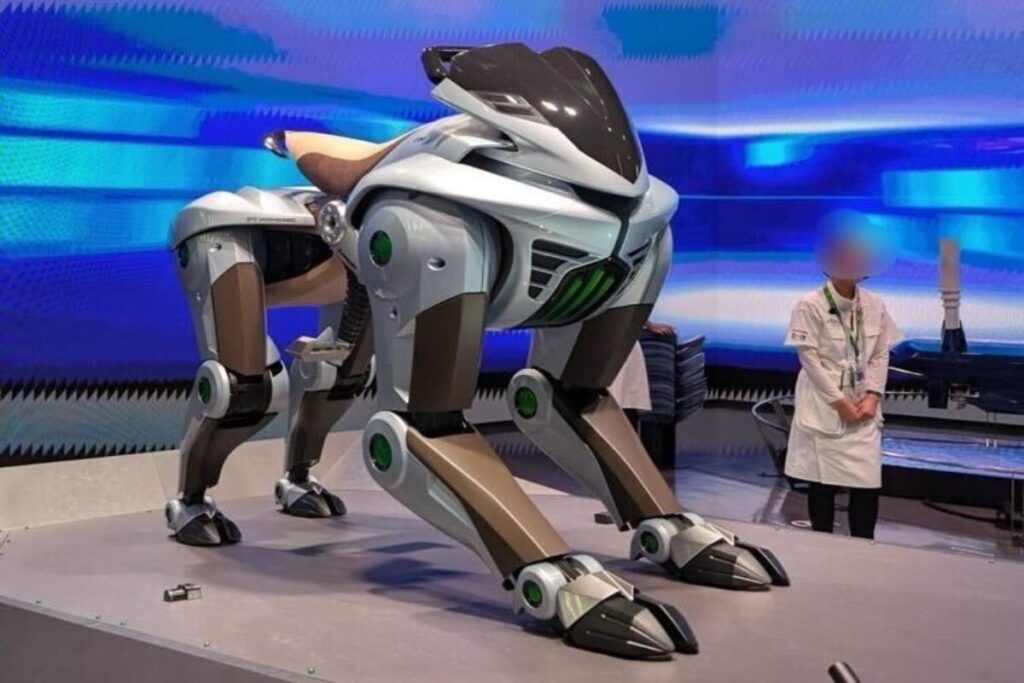
This continued until a group of creative minds found a way to replace horses with machines directly. From then, it was only a matter of time before one of the most fascinating inventions—mechanical steeds—emerged. These were machines that worked like and even better than horses.
Mechanical steeds are a hybrid of machines and horses. They were the perfect response for those who loved the progress of the Industrial Revolution but missed the thrill of using horses for labor. The “Iron Horse” provided a taste of both worlds.
These horse-like machines could perform better than real horses. Although they couldn’t be ridden in the conventional way horses were mounted, they could transport people and heavier loads over long distances.
We have moved from mechanical iron horses to computerized ones. AI and robotics have taken the mechanical steeds idea to super-amazing levels. Steeds can carry even more load with smoother and more graceful movements. Modern steeds are so smart that they can move without human guidance and assistance.
Let’s trace the evolutionary journey of this centuries-old idea. Discover how the crude mechanical steeds of the early 1800s led to the refined, high-tech robots we have today.
The Steam Horse (1813)
The earliest horse-modelled steam locomotive was “Puffing Billy.” Built by William Hedley, Timothy Hackworth, and Jonathan Forster in Northumberland, England, it was the rave of the moment.
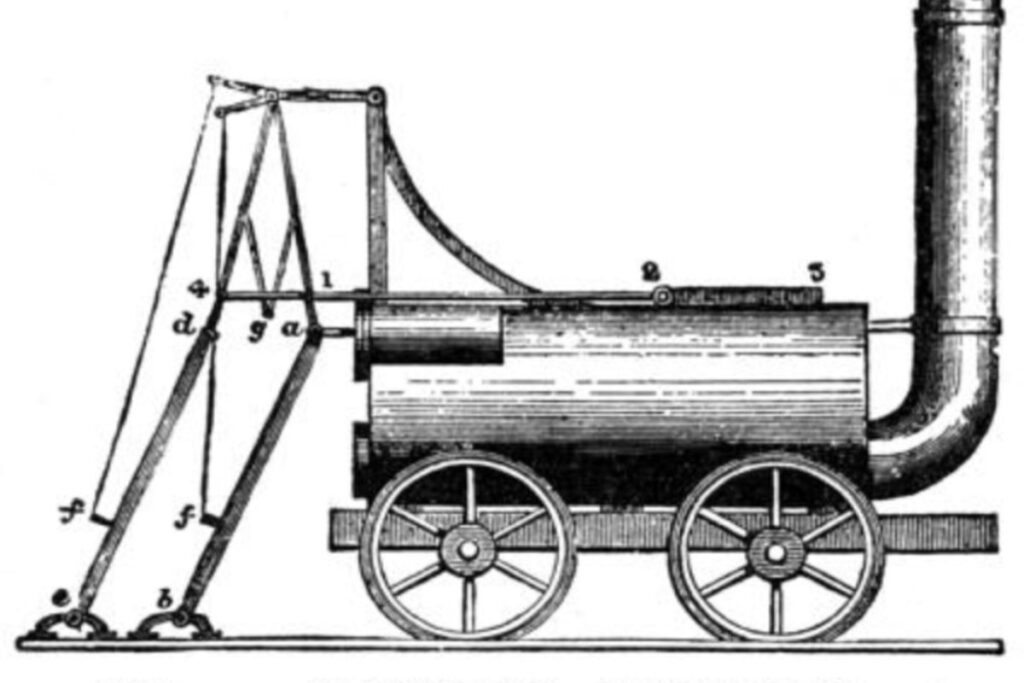
The machine’s ability to haul large coal wagons and run at a speed of five miles per hour created no small excitement. Puffing Billy operated on a single steam engine but was later upgraded to a much better four-cylinder engine. With four cylinders, it enjoyed more stamina and traction on the rail tracks on which it ran.
The inventors were motivated by the need for a more efficient mechanism for moving coal from the mines. Puffy Billy more than served this purpose. Weighing about 8 tons, it pulled up to 30 coal wagons from mines. From 1813, when it began operation, it served humans for decades before it faded out.
George Stephenson’s Rocket (1829)
Perhaps the biggest breakthrough in steam-powered mechanical “horses ” was George Stephenson’s Rocket, which came on the scene in 1829. It surpassed speed expectations and had multiple innovative features that made it irresistible.
Its inventors, George Stephenson and his son Robert, designed the machine in response to a competition organized by the Liverpool and Manchester Railway. The winner will become the railway’s new line. In the end, the Rocket outclassed all its other rivals.
Tagged the Rainhill Trials, the October 1829 contest not only tested for speed. It also graded participating machines on efficiency and reliability.
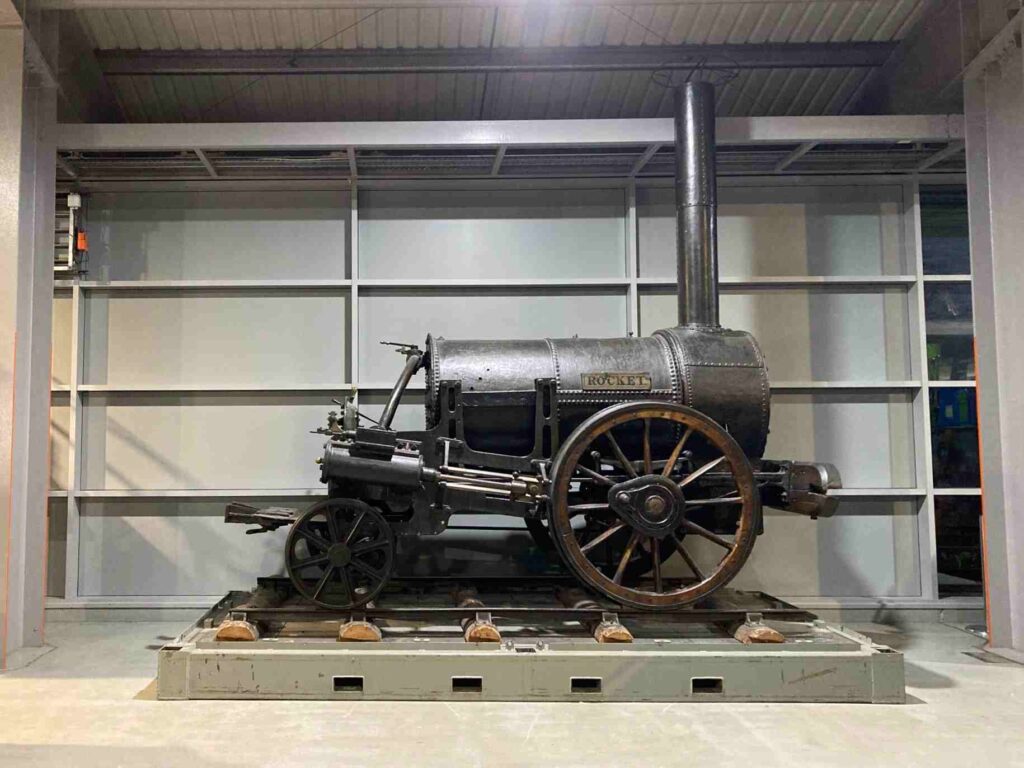
The Rocket stood out on all fronts. First, it impressed the crowd with its speed capability of up to 30 miles per hour. It also shone as the first choice option for human and cargo transport. Unlike its competitor, Rocket didn’t suffer any major breakdowns during the trials.
Rocket served the Liverpool and Manchester Railway for over a decade before newer designs in the 1830s replaced it. To date, the rocket sits in the Science Museum in London as a testament to human innovation.
Sylvester Roper Steam Velocipede (1867)
Another bold step in the evolution of mechanical steeds came in 1867 with the Steam Velocipede. Sylvester Roper and other inventors began working on steam-powered tricycles and motorbikes during this period. Roper’s efforts led to the steam velocipede.
After its creation, a controversy arose, with many debating over which machine was the earliest motorcycle, between it and the French-made Michaux Perreaux. Whether first or second, the brilliance behind this machine was not in doubt. The machine had a well-thought-out iron frame and a pair of 34-inch wooden wheels.
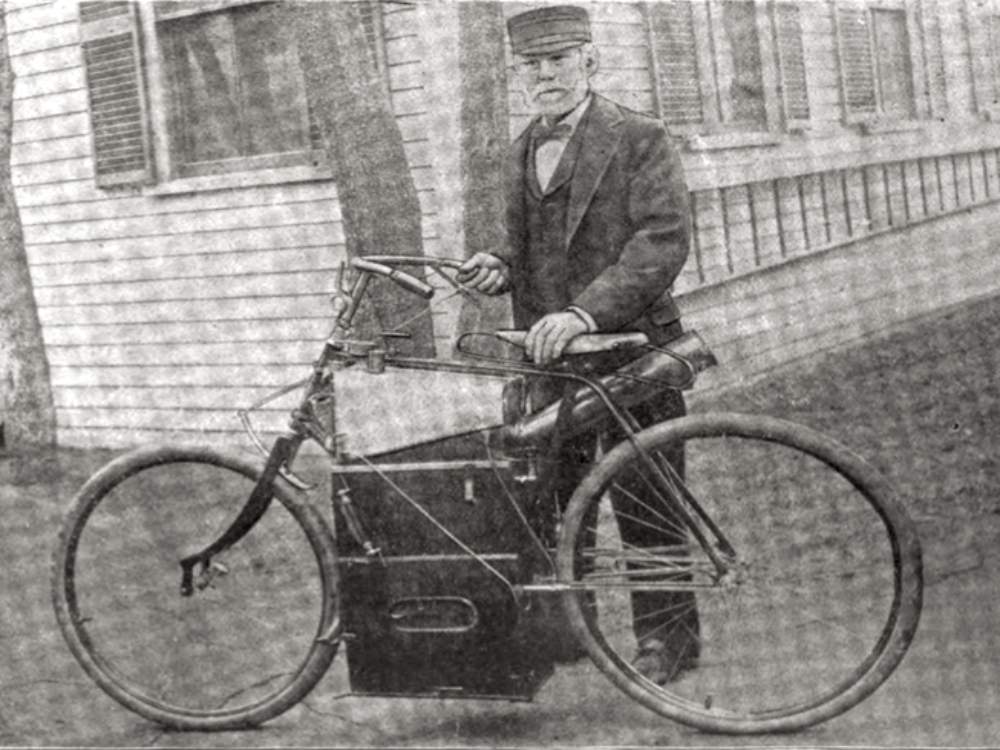
Its double-cylinder steel engine was positioned between the wheels, and a charcoal-powered boiler propelled it. The Roper steam velocipede weighed about 150 pounds and reached speeds of up to 40 miles per hour. Although noisy and smelly, the machine made personal transport a lot easier. It became the father of personal motorized vehicles.
The Era of Internal Combustion (Mid-19th Century to Mid-20th Century)
Internal combustion came on the scene in the mid-19th century. It was an improvement on the steam engines. Internal combustion engines, or ICE, went beyond several limitations of steam-powered engines.
ICE wasn’t heavy-duty and didn’t need external boilers. The fuel is burned in a closed compartment to generate mechanical energy. Also, internal combustion was way more efficient.
French engineer Francois Isaac de Rivaz designed the earliest model of this vehicle system. His 1807 prototype featured a hydrogen and oxygen-powered piston with spark ignition. But it wasn’t until 1859 that the first commercially viable engine was unveiled.
It was a gas-powered engine developed by Belgian engineer Jean Joseph Etienne Lenoir. Although noisy and messy, it was a big leap from the past. The world witnessed other breakthroughs from inventors and innovators such as Nikolaus Otto and Eugen Langen with the Otto engine, a four-stroke cycle engine that ran on gas.
Wilhelm Maybach and Gottlieb Daimler developed the Otto system to run on liquid fuel. They successfully used this new technique in 1885. Karl Benz improved it into a two-stroke system in 1879. Indian Motorcycle and Harley-Davidson produced motorbikes from these models in 1901 and 1903, respectively.
Robotic Steeds (2000s to 2010s)
In the 2000s, robots began to replace these steeds. The BigDog robot emerged in 2005 as a military platform for transporting soldiers through rough topography. Three feet long, 2.5 feet tall, and weighing about 240 pounds, BigDog could bear up to 340 pounds of load.
The vehicle could move through the most rugged terrain at an unbelievable speed of 4 miles per hour. It was up to the task, whether on ice, mud, or snow. It could also surmount slopes of 35 degrees and run for 20 kilometers.
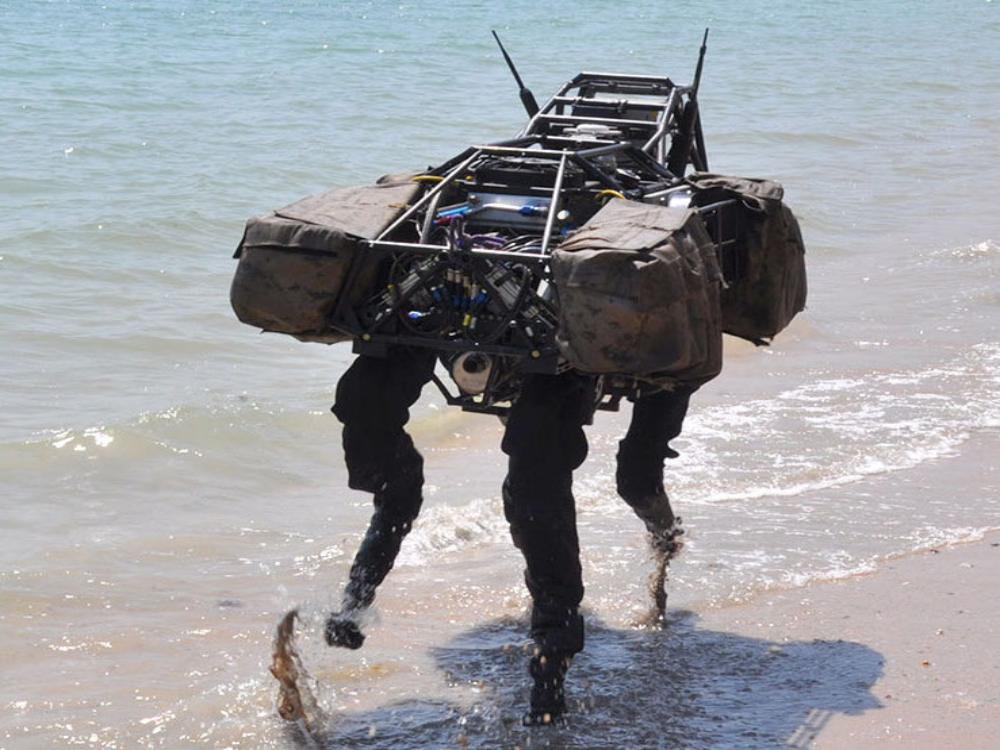
It had a computerized control that humans operated. To navigate each type of terrain, it simply needed to change its posture and foot placement. Depending on the situation, it could walk, crawl, or trot.
However, the government abandoned the project because it failed to reduce the massive noise. Stealth was key for combat, and the two-stroke internal combustion gasoline engine machine was too loud to achieve that.
After BigDog, several researchers developed robotic horses just for fun. Of note was the Legged Squad Support System (LS3) designed by Boston Dynamics, the makers of BigDog.
Also known as AlphaDog, the LS3 was intended to act as semi-autonomous “pack horses” for soldiers. These machines were horse-like and were to bear military gear of up to 40 pounds for more than 20 miles. This would reduce soldiers’ fatigue as they advanced toward their mission location.
LS3 was the size of the average horse and ran on a two-stroke ICE that generated up to 40 horsepower. It could walk at speeds of 1-3 miles per hour and jog for 5. It could also journey for 32 kilometers on a full tank. However, just like BigDog, the project was abandoned due to noise and repair issues.
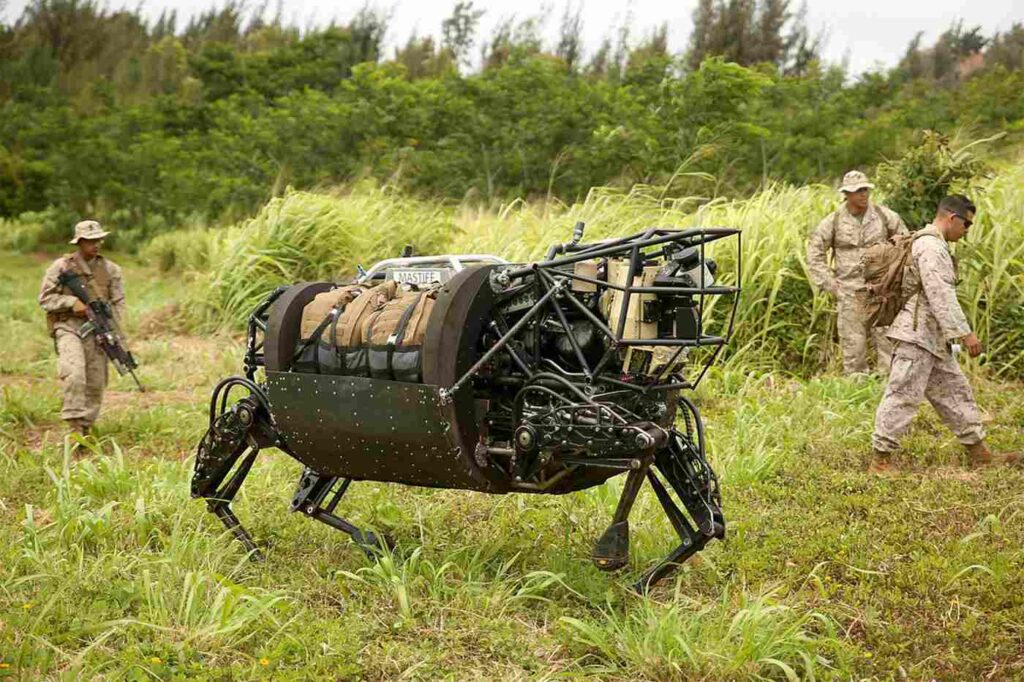
The Kawasaki’s Robot Horse (2022-Present)
Just when it seemed like the world had seen the last of iron horses, the Kawasaki Robot Horse showed up. The machine, also called Kawasaki’s Bex, is based on the popular extinct mountain goat, the Pyrenean Ibex.
Kawasaki’s robot horse is a four-legged robot designed to move through rugged terrain while bearing a heavy load. The robot horse, including a human rider, can carry up to 220 pounds of load. Riders can direct the machine using handlebars and controls.
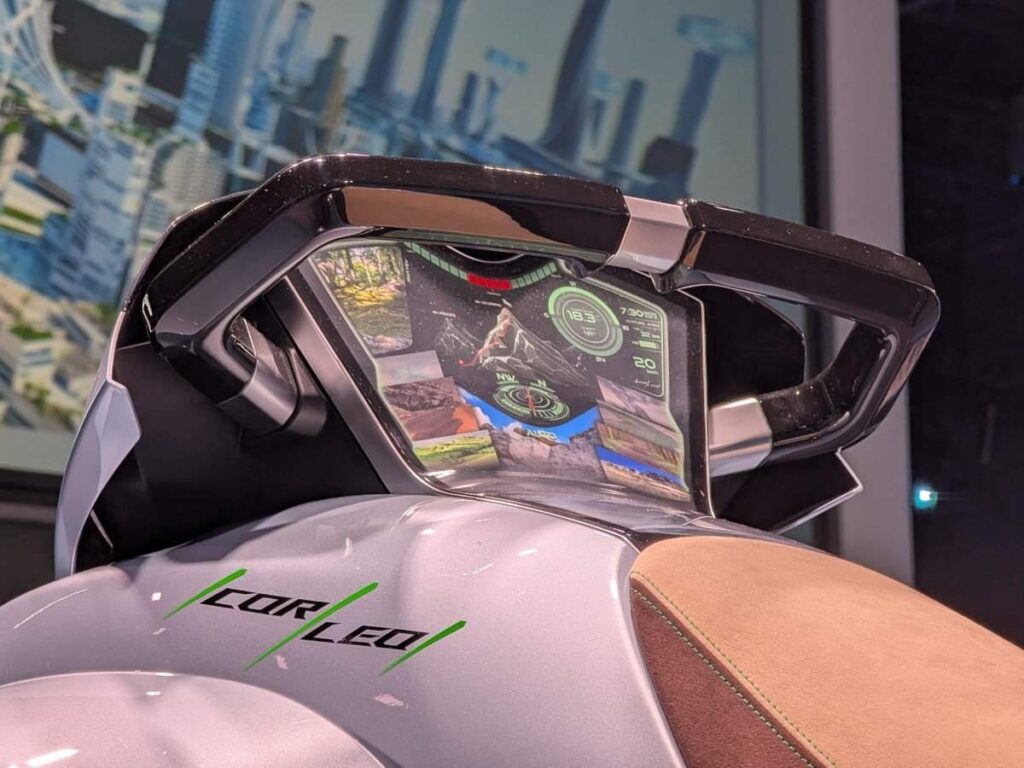
Kawasaki’s Bex was first showcased at the 2022 International Robot Exhibition (iREX) in Tokyo, Japan. The Bex can either walk on its four legs on rough landscapes or kneel and utilize wheels on smooth ground. This dual capability enhances its versatility across surfaces.
When well developed, the Bex will prove invaluable in the agricultural and industrial sectors that rely on load transportation. This additional development has reached significant stages and has already yielded exciting results.
The Kawasaki Corleo (2025)
Unveiled at the Osaka-Kansai Expo 2025, the Kawasaki Corleo is a much-improved version of the Kawasaki Bex. Like its predecessor, the Corleo has four robotic legs covered with rubber protections similar to hooves.
Aside from mastering rugged terrain, the Corleo can also move through water. The Corleo runs on a hydrogen-powered engine. The machine is fitted with small tanks that store and supply the gas when the first supply is depleted.
The Corleo greatly improves the Bex, as its riders only need to adjust their body positions to direct the robot. Sensors installed on the machine’s body will read and follow these movements.
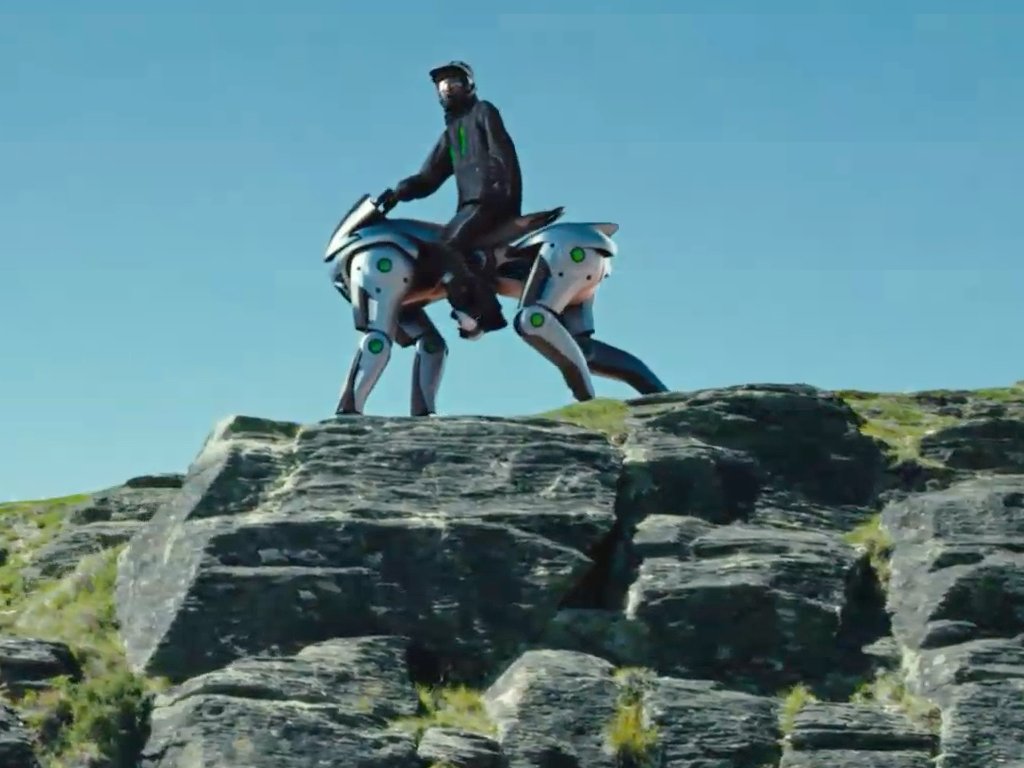
The Corleo has been the rave of the moment. Videos of its operations circulating on social media have drawn widespread admiration. But this is likely not the end of the wonders of technology in human and cargo transportation. Clearly, the horses have never left us. But they are here in iron form, and more are on the way.


